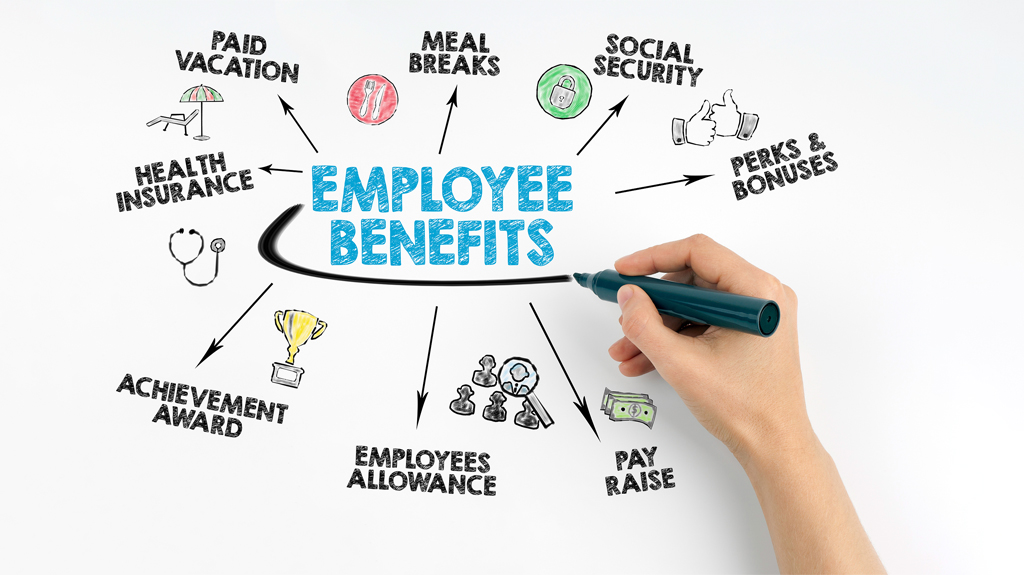
Employee benefits play a crucial role in attracting top talent, improving employee satisfaction, and fostering a positive work culture within organizations. From healthcare coverage to retirement plans and beyond, offering a comprehensive benefits package demonstrates a commitment to employees' well-being and contributes to overall job satisfaction. In this guide, we'll explore the various components of employee benefits, their importance, and strategies for designing and implementing an effective benefits program.
Medical Insurance: Provides coverage for medical expenses, including doctor visits, hospital stays, prescription medications, and preventive care.
Dental and Vision Insurance: Offers coverage for dental procedures and vision care services, including eye exams, glasses, and contact lenses.
Health Savings Accounts (HSAs) and Flexible Spending Accounts (FSAs): Allow employees to set aside pre-tax dollars to cover eligible healthcare expenses.
401(k) Plans: Tax-advantaged retirement savings plans that allow employees to contribute a portion of their salary, often with employer matching contributions.
Pension Plans: Defined benefit plans that provide employees with a guaranteed income stream in retirement, typically funded by the employer.
Life Insurance: Offers financial protection for employees and their families in the event of death or disability.
Disability Insurance: Provides income replacement for employees who are unable to work due to illness or injury.
Vacation Days: Paid time off for employees to take a break from work and recharge.
Sick Leave: Paid time off for employees to recover from illness or attend to personal or family health needs.
Holidays: Paid holidays observed by the company, such as New Year's Day, Independence Day, and Thanksgiving.
Flexible Work Arrangements: Options such as telecommuting, flexible hours, and compressed workweeks to accommodate employees' personal schedules and preferences.
Parental Leave: Paid or unpaid leave for employees following the birth or adoption of a child, typically including maternity and paternity leave.
Tuition Reimbursement: Financial assistance for employees pursuing further education or professional development.
Training and Development Programs: Opportunities for employees to enhance their skills, knowledge, and career advancement prospects.
Competitive employee benefits packages are key to attracting top talent and retaining skilled employees in a competitive job market.
Comprehensive benefits programs contribute to overall job satisfaction and morale among employees, leading to higher levels of engagement and productivity.
Health and wellness benefits, such as medical insurance and wellness programs, support employees' physical and mental well-being, leading to healthier, happier, and more engaged employees.
Offering attractive employee benefits enhances an organization's employer brand and reputation, positioning it as an employer of choice within the industry and community.
Survey employees to understand their preferences and priorities regarding employee benefits, including healthcare coverage, retirement plans, and work-life balance programs.
Research industry standards and competitors' benefits offerings to ensure that your benefits program remains competitive and attractive to current and prospective employees.
Tailor benefits packages to meet the diverse needs and preferences of your workforce, offering flexibility and choice in benefits selection where possible.
Provide clear, accessible information about employee benefits offerings, including plan details, eligibility criteria, enrollment processes, and resources for employees to make informed decisions.
Regularly evaluate the effectiveness of your benefits program through employee feedback, engagement surveys, and utilization data, and make adjustments as needed to align with changing workforce needs and organizational goals.
Employee benefits are a cornerstone of a competitive compensation package and a critical factor in attracting, retaining, and engaging top talent. By offering a comprehensive benefits program that addresses employees' diverse needs and priorities, organizations can enhance job satisfaction, promote employee well-being, and strengthen their employer brand and reputation. With careful planning, customization, and communication, businesses can design and implement an effective benefits program that supports their employees' success and contributes to overall organizational success.